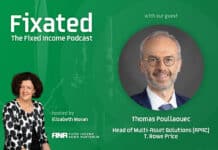
Australian ETF assets under management surged around 15% over the first half of 2024 to a new record high of more than $200 billion as at 30 June following solid gains on global equity markets and strong investor inflows.
This compared with total Australian ETF assets on the Australian Securities Exchange (ASX) and the Cboe Australia exchange of around $178 billion at the start of 2024. There are around $4.8 billion of ETF assets listed on the Cboe Australia exchange.
Data released by the ASX and Vanguard shows Australian ETF assets rose by around $25 billion from the start of January to the end of June, with total ETF investor cash inflows on the ASX of $10.67 billion.
Inflows into ASX-listed international equity ETFs totalled $5.28 billion (49% of inflows), while Australian equity ETFs attracted $2.95 billion of investor capital over the half. This represented 27% of total ETF inflows.
Also read: Public and Private Credit: Where Investors Should Focus
The overall pace of ETF inflows maintained momentum over the three months to 30 June. Following total inflows of $5.28 billion over the March quarter, investors added a further $5.38 billion to ASX-listed ETFs over the June quarter.
A key theme over the first half of 2024 was the surge in listings of active ETF and managed fund products. Out of 41 new ASX ETF listings in total, 28 of them (68%) were actively managed funds.
“The number of new funds listing on the ASX has been accelerating, and most of these have been niche investment products underpinned by complex trading strategies, sometimes through the use of debt and synthetic financial instruments,” said Adam DeSanctis, Vanguard’s Head of ETF Capital Markets, Asia-Pacific.
“What’s clear is that the ETFs industry is continuing to evolve, which is why the Australian Securities and Investments Commission (ASIC) has just introduced new ETF product labelling guidelines to reduce confusion and assist investors in understanding the risks associated with different types of ETF products.”
Fixed income inflows stabilise
Inflows into fixed income ETFs totalled $1.69 billion over the first half, which compared with total fixed income inflows of $1.74 billion over the first half of 2023.
Australian fixed income ETFs recorded inflows of $1.29 billion over the half, while international fixed income ETFs received inflows of $394 million.
“Vanguard’s global expectations for higher bond returns over the longer term have not changed, which aligns with our view that central bank interest rates are likely to remain elevated over the medium term,” Mr DeSanctis said. “So, we expect ongoing interest in fixed income from investors seeking to tap into those higher rates via ETFs that primarily invest in investment grade government bond issues.”






























